In this tutorial, we will take a deep dive into resource managementand effective handling of images in AffinityPublisher. Handling images is often crucial for the success of a layout. The software offers versatile features to use images creatively and apply their effects purposefully. Let’s explore how you can use resource management to optimize your projects and take image usage to the next level.
Key insights
- The resource management provides a central overview of all media used.
- Images can be placed and adjusted in various ways, including the use of opacity and blending modes.
- Through resource management, you can manage, replace images, and track their links.
- Embedding images has advantages and disadvantages that you should consider before sharing your file.
Step-by-step guide
Getting started with resource management
To open the resource management, navigate to "Document" and select "Manage resources." Here you get a comprehensive overview of all the images used in your document. This overview makes it easier for you to control your media and provides the ability to swap or delete images easily.
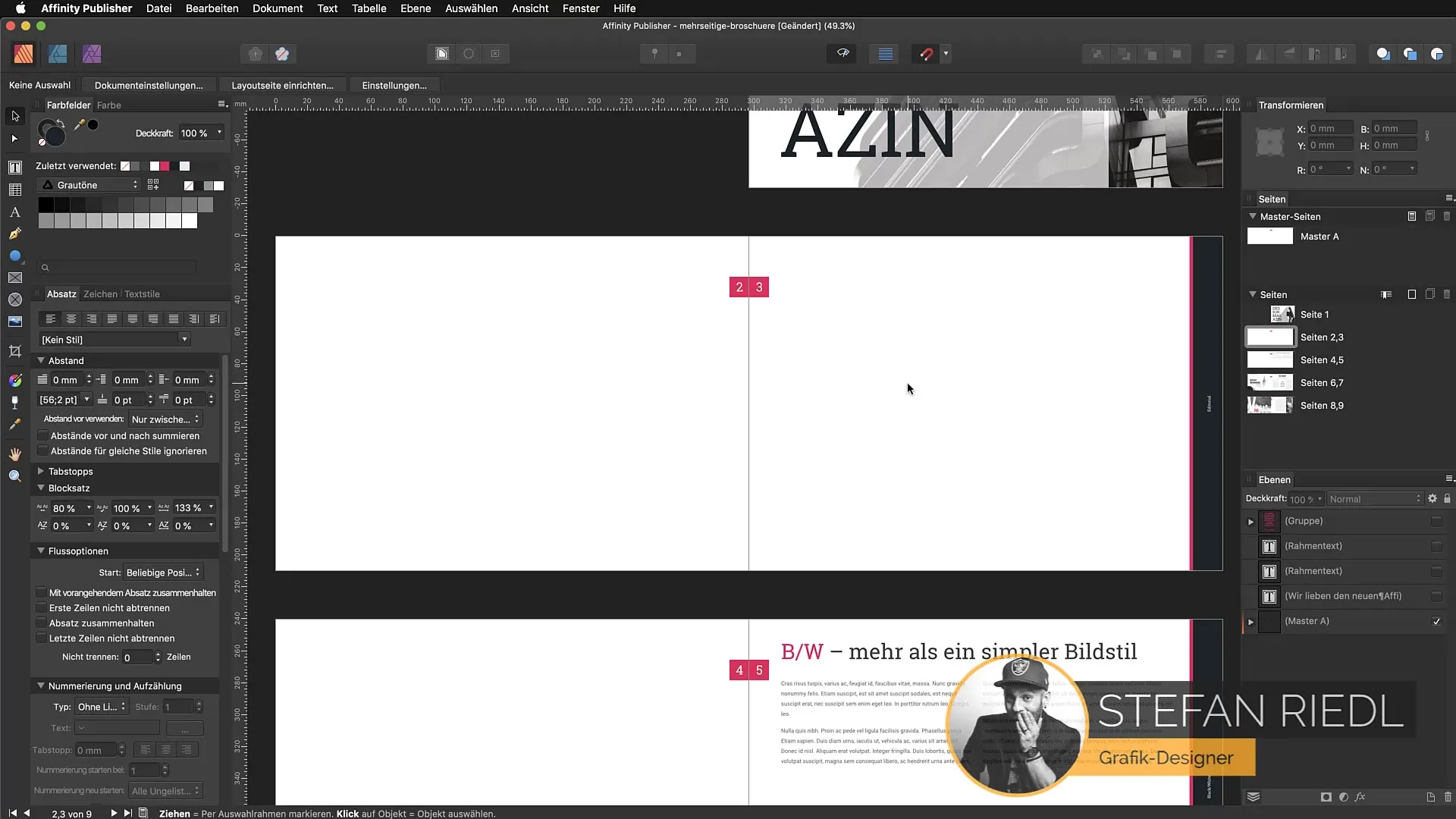
Placing images
If you want to insert images into your document, there are several methods. You can either use the image placing dialog or drag and drop images directly into your layouts. If you want to insert multiple images, I recommend starting with a rectangle frame. Place and copy the frame accordingly.

Image formats and placement
Affinity Publisher supports various image formats such as PSD, AI, PDF, JPEG, TIFF, PNG, and more. To select images, go to "File" and then "Place." Choose the desired images and click "Open" to insert them into your layout. You can then move and adjust the images.

Using image effects
A simple but effective effect is adjusting the opacity of an image. Try a reduced opacity of, for example, 15% to create a gentle background. Make sure to pull the master layer of your design up so that the image is not obscured by other objects.
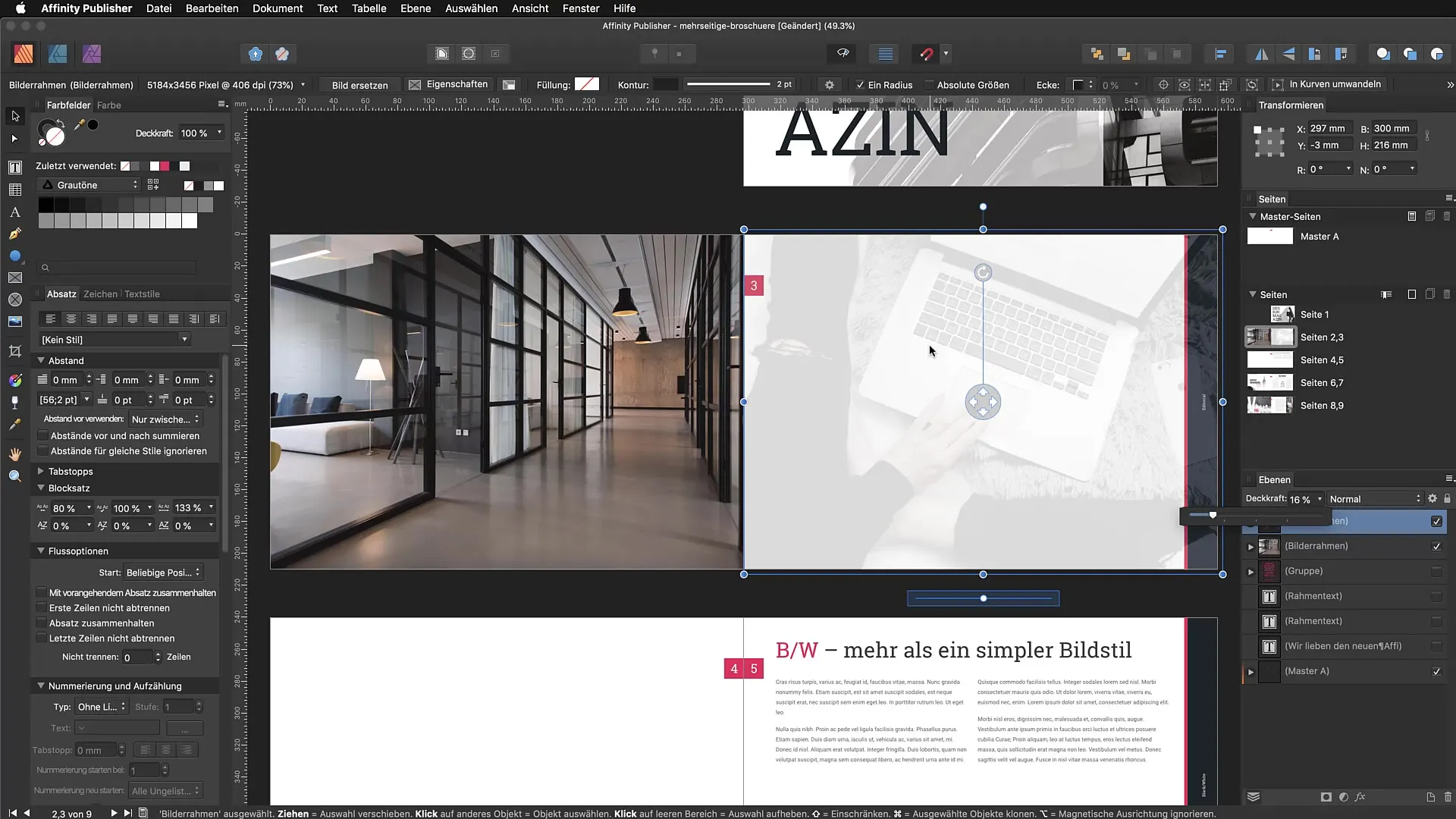
Blending modes for creative effects
You can fill rectangular frames with colors and change their blending mode. For this, select "Hard Light" in the layers panel. This gives your image a gentle transparency and adds depth and style to your design. Place your text beneath the master layer to ensure it appears above the image.
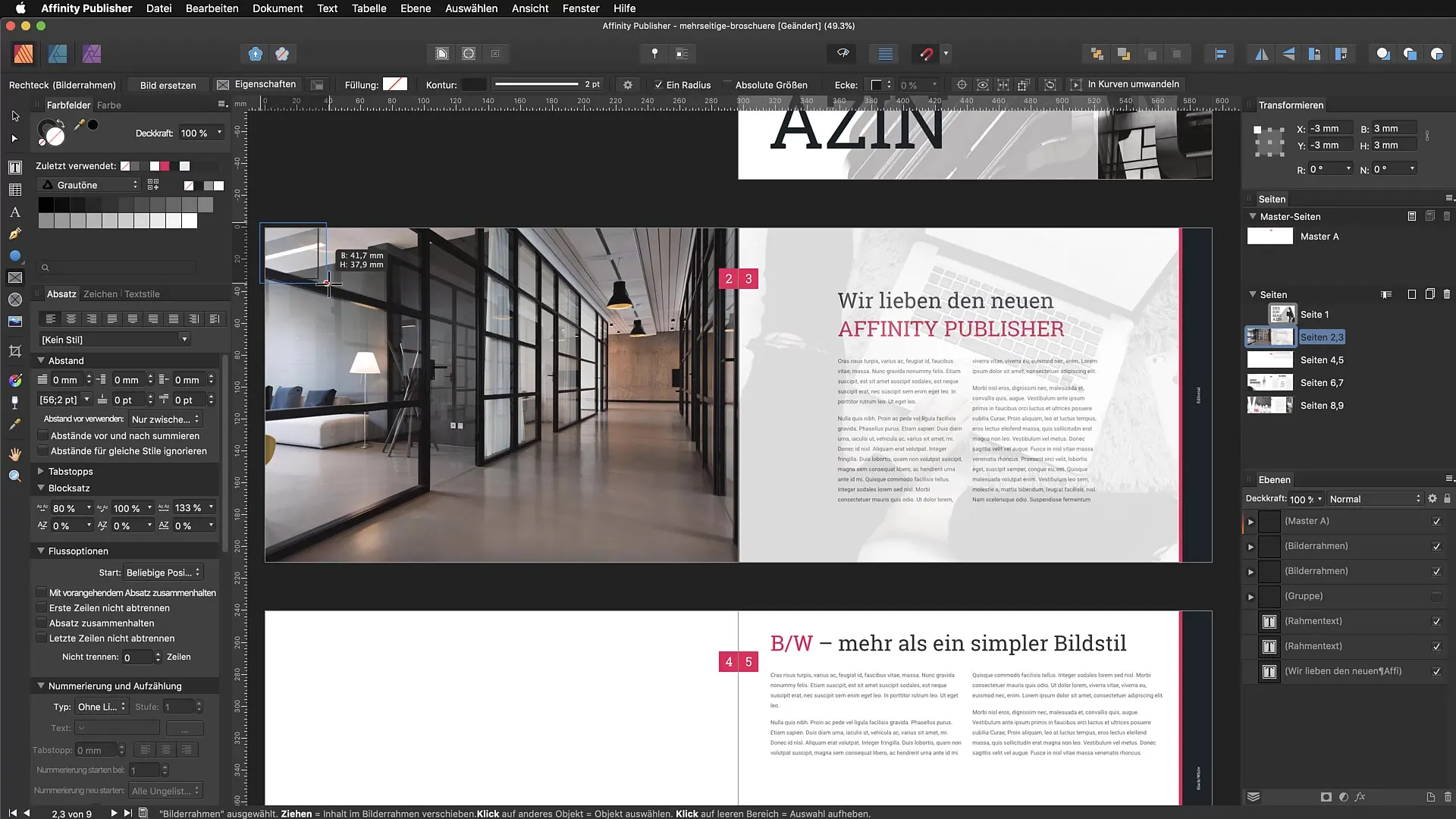
Managing and replacing images
The resource management allows you not only to view the images used, but also to replace them. If you no longer like an image, you can select it and use the "Replace" function to swap it for a new image. Note that this function works across documents.

Embedding or linking images
You should decide whether to use images as embedded files or as linked files. Embedded images are part of your document, making it easier to share the file, but this significantly increases the file size. Linked images, on the other hand, require access to the original file but should preferably be used to minimize file size.
Designing with shapes and shadows
An interesting effect in Affinity Publisher is transforming image frames into curves. This allows you to play with anchor points and creatively adjust your designs. Add a drop shadow to highlight your images and give more dimension to the layout.
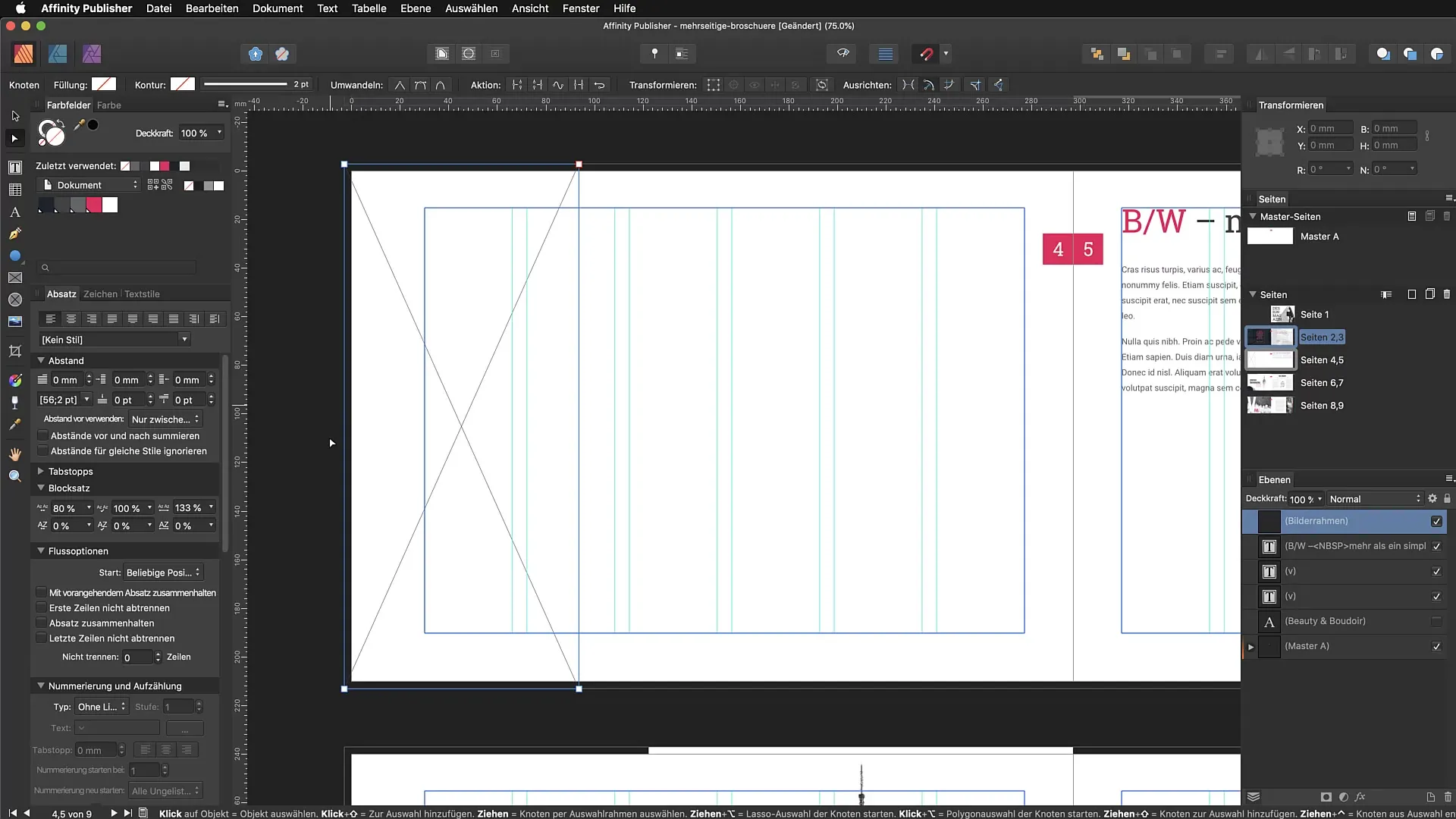
Color and blending mode adjustments
Experiment with different color and blending modes in your layout. This can change the impression your design makes on the viewer. For example, by using the Lighten blending mode, you can turn black into white, creating a striking fashion style.
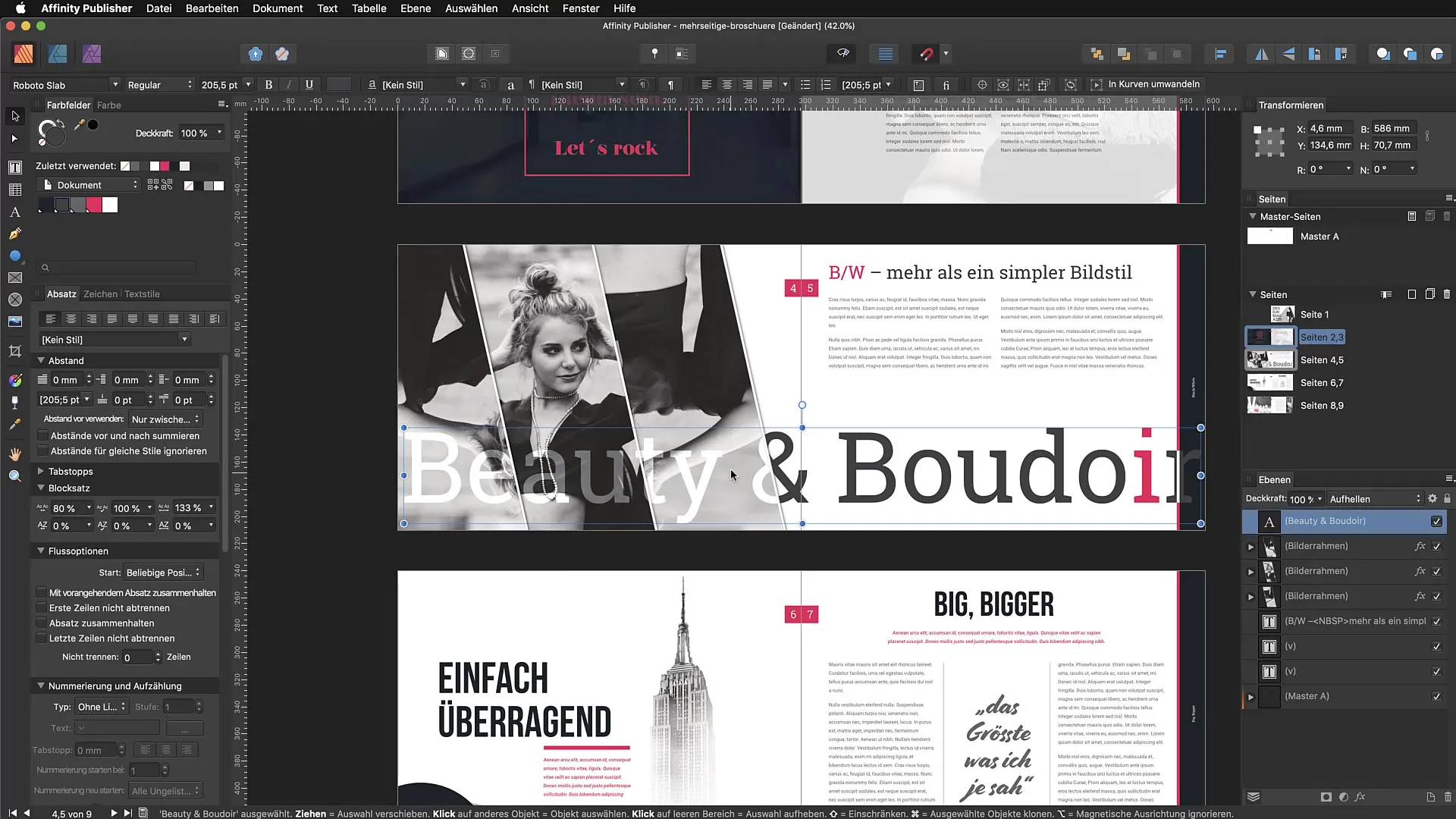
Summary – Resource management and image effects in Affinity Publisher
In this tutorial, you have learned how to effectively use resource management in Affinity Publisher to place images and adjust their effects. The key features such as replacing images, designing through blending modes, and the consideration between linking and embedding allow you to work creatively and professionally on your layouts.
FAQ
How do I open resource management in Affinity Publisher?Go to "Document" and select "Manage resources."
How can I insert images into my layout?Use the "File" > "Place" function and select the desired images.
What are the advantages of embedded images?Embedded images are part of your document and make sharing easier, but they increase the file size.
How do I change the opacity of an image?Select the image and adjust the opacity in the layers panel.
What is a blending mode?A blending mode changes how an image or color interacts with the underlying layers to create various effects.


